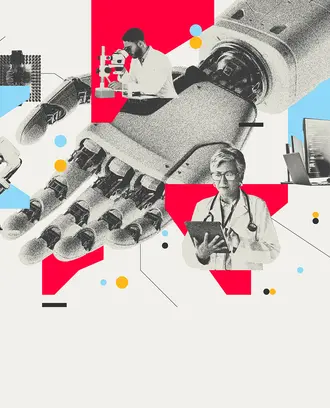Credit: Shutterstock
Much of today’s way of working is still rooted in the Second Industrial Revolution, when technology was built around specific tasks, career paths were linear, and job qualifications were defined by educational degrees.
But as technology advances and jobs move from traditional roles to gig and on-demand talent, businesses must adapt to a future where automation, agility, and reinvention define the new way of working.
A new book, Work Without Jobs, proposes that companies adopt a “new work operating system” that emphasizes the work instead of the job, encourages collaboration between humans and machines, and recognizes the gamut of existing and future work styles like gig, freelance, and contract.
In a recent webinar hosted by MIT Sloan Management Review, the book’s co-authors shared the elements of work without jobs. Here’s a closer look at how to achieve a new work operating system:
1. Deconstruct work into job elements or tasks.
Start with the premise that every job has options for flexibility, said Ravin Jesuthasan, a senior partner at American asset firm Mercer, and one of the book’s co-authors. Take apart and examine all the aspects of a job. Identify which elements of work need to be done at a particular place, with certain equipment, at specific times. Consider what work can be done independently and what needs collaboration.
2. Detach workers from their particular role and instead view them as individual people with an array of skills.
Stop thinking of an employee as just a degree with a skill set, and start thinking of them “as someone with lots of capabilities that we may not even be using in the job that they hold,” said co-author John Boudreau, a professor at the University of Southern California’s Marshall School of Business.
At health care organization Providence, a pre-COVID nursing shortage grew even worse when the pandemic hit. Providence relicensed some of its executive administrators — who were former physicians — so they could be on the hospital floors to lighten the workload for nurses.
3. Use talent marketplaces and platforms to match workers with tasks.
As an organization transitions to a more agile system, it should consider both internal gig workers and external talent, Jesuthasan said. An internal talent marketplace can encourage employees to take on projects outside of their day-to-day roles, and interact with other leaders or groups. Contractors or external labor can also expand the talent pool when managers are matching projects with skill sets.
New opportunities
The overarching focus on fluid work arrangements and worker capabilities can amplify worker voice, equity, and inclusion, the co-authors said.
“If you think of the times at which diversity is addressed [now], it's at the time of hire, it’s at the time of promotion, it’s at the time of pay raise,” Jesuthasan said. “These are incredibly episodic, versus in a new work operating system where talent is flowing to work. You have so many more opportunities to address some of those legacy issues; to keep moving the needle on diversity, equity, and inclusion.”
Watch: Imagining Work Without Jobs



